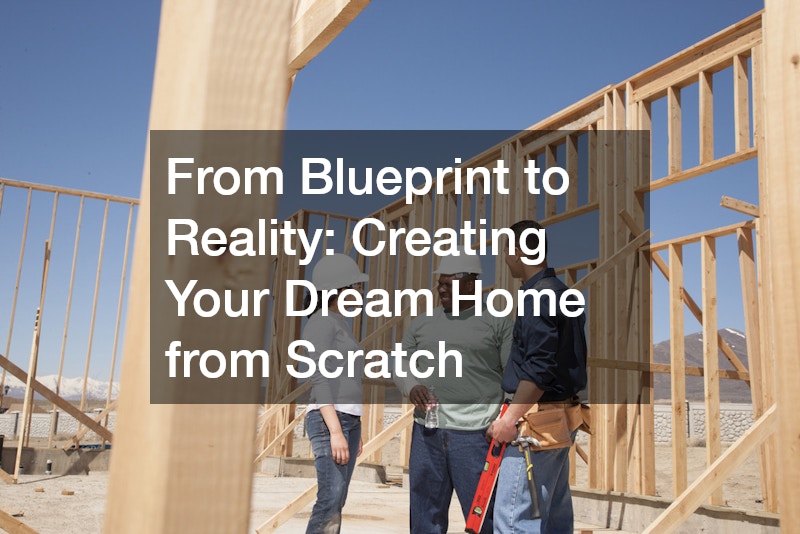This article will guide you through the essential steps of turning your vision of a dream home into a tangible reality. With careful planning, execution, and the use of a custom home builder, you can create a space that reflects your style and meets your needs.
The First Step in Building a Custom Home
Understanding Your Needs and Budget
The journey of building your dream home begins with a thorough understanding of your needs and constraints. Start by listing your family’s current and future space requirements alongside your lifestyle preferences.
Equally important is setting a realistic budget, factoring in contingencies for unexpected expenses to avoid financial strain.
Assessing living requirements involves considering both current usage and anticipated future growth. For instance, if you plan to expand your family, incorporating additional bedrooms or flexible spaces may be essential. Moreover, understanding your budgetary limits ensures you make informed decisions without compromising crucial elements of your dream home.
Once you determine your needs and budget, you can better navigate other decisions such as the size, layout, and features of the home. This initial clarity paves the way for more focused conversations with professionals like architects and builders. The alignment of your expectations with your financial capacity is pivotal to a successful home-building experience.
Selecting the Right Location
Location is a critical factor that influences the value and enjoyment of your home. Select a neighborhood that aligns with your lifestyle, considering proximity to work, schools, and recreational amenities. Moreover, investigate future development plans in the area that might affect your home’s value.
Researching school districts and community features is especially vital if you have children or plan to start a family. Schools with strong reputations not only enhance your children’s education but can also increase your property’s value. Additionally, access to parks, shopping centers, and healthcare facilities can significantly impact your daily living experience.
Commute times are another key consideration, as they directly affect your work-life balance. Choosing a convenient location reduces daily stress and gives you more time to enjoy your new home. Factoring these elements into your decision-making process ensures your new home suits your holistic lifestyle needs.
Choosing the Right Architect and Builder
Evaluating Professional Credentials and Portfolio
Choosing the right architect and builder is crucial to materializing your dream home vision. Start by scrutinizing their professional credentials to ensure they hold the necessary licenses and certifications. Additionally, review their portfolio to assess experience and compatibility with the style you desire.
The builders’ and architects’ past projects can offer insights into their design sensibilities and craftsmanship quality. A well-curated portfolio demonstrates their ability to handle projects of varying complexity and style. Seek testimonials or references from past clients to understand their reliability, communication skills, and problem-solving abilities.
Aligning your project with experienced professionals who share your aesthetic and functional vision reduces the risk of dissatisfaction. Moreover, professionals familiar with local zoning laws and building codes can streamline the process and prevent costly regulatory issues. A thoughtful evaluation thus maximizes the chance of a seamless construction process leading to your ideal home.
Ensuring Effective Communication and Collaboration
Effective communication and collaboration are at the heart of a successful home-building project. Establishing clear communication channels with your design and construction teams ensures everyone is on the same page at every phase. Regular meetings and updates help track progress and address any issues promptly.
A collaborative environment fosters trust and allows for the blending of ideas, ultimately enriching the final outcome. Encourage open dialogues where team members can bring forward suggestions or highlight potential issues. This proactive approach helps in preempting problems and ensures that adjustments can be made without derailing the project.
Documenting decisions and maintaining transparent records throughout the process also mitigates misconceptions and disputes. This structured communication prevents costly mistakes and keeps the project’s vision consistent from blueprint to completion. Thus, a comprehensive collaborative strategy is essential to achieving a harmonious building experience.
Staying on Budget and Managing Construction Timelines
Implementing a Detailed Construction Plan
Creating a detailed construction plan is pivotal to managing costs and timelines effectively. Begin by outlining each phase of construction with specific timelines and key milestones. This blueprint serves as a roadmap to monitor progress and ensure sequential tasks are completed efficiently.
Include contingencies for potential delays or budget variations that may arise due to unforeseen circumstances like weather or material shortages. An adaptable plan keeps the project resilient and prevents minor issues from escalating into significant setbacks. By planning meticulously, you not only keep the process organized but also reduce stress and improve predictability.
Regular Monitoring and Flexibility
Regulating progress and adapting to changes during construction are critical for maintaining schedules and budgets. Regular site visits and progress meetings can help identify and resolve issues before they escalate. Staying engaged allows you to make informed decisions rapidly, ensuring continuous progress.
Flexibility is vital, as some aspects of construction may not always go according to the original plan. Unforeseen challenges such as supply delays or necessary design modifications demand quick thinking and adaptation. The ability to pivot smoothly minimizes disruptions and keeps the project aligned with the overall timeline and vision.
Building your dream home from scratch requires thoughtful planning, informed decision-making, and meticulous execution. By following these guidelines, you can create a home that is not only structurally sound but also tailored to your personal lifestyle and needs. With a dedicated approach and attention to detail, your dream home seamlessly transitions from a blueprint to a stunning reality, providing comfort and joy for years to come.




